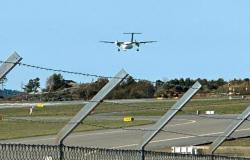– Today, around half of the power we use is fossil-based, so we are facing a major restructuring, Kippe continues. He is clear that the world is well underway with the work, and that the pace will only increase in the years to come.
– What do we have to switch to when we leave oil and gas?
– More energy from sun, wind and water, it will come quickly before he adds. – And then we must streamline and upgrade where we can, as well as save where possible.
Renewable Norway is a nationwide interest and employer organization for the entire renewable industry and saw the light of day on 1 January 2023. The merger of Energi Norge and Norwea led to the establishment of the new organisation.
Power development engages
In the long run, it is not enough for every house to have its own solar cells. A lot more power is needed than that. In Europe, one sees large solar cell plantations and here in the country, large wind farms have created strong interest and big headlines. Not least, the Fosen case has made it clear that power development also creates conflicts of interest. Norwegians have also experienced what hydropower development has led to through commitment.
The Alta development did not go unnoticed. The political conflict stretched from 1968 to 1982. Here, too, Sami interests and environmental protection interests were in conflict with developer interests.
In Akersposten’s catchment area, towering masts have ensured great engagement and many notices.
also read
See the tunnel alternatives: Major consequences for the neighbourhood
– Power development, whether we are talking about solar cells, hydropower or wind power, will be visible in the landscape. The industry must build as gently and as efficiently as possible, but this will require land.
– We all need electricity, but we do not want the facilities in our own immediate area. How should it be resolved?
– There is no simple answer with two lines under it here, but local compensation is important. The host municipalities must get something back, which we now have good systems for in Norway, both in wind and water. In addition, the developments must be locally rooted and affected interests must be heard.
Fee, license and cables
– Now a production tax has been introduced on wind power, says Kippe and explains that it is a tax which means that companies that participate in the production pay a share to the host municipality, regardless of operating and investment costs. For hydropower, the compensation schemes have existed for a long time.
The licensing legislation also plays a big role in how the developments turn out, so that here a lot of work has to be put into the preparations so that the developer and those affected can live side by side as best as possible.
– What about the foreign cables? Can we cut them?
– They are absolutely necessary for the security of supply for the country and a central part of the renewable energy system. At times we have a power deficit.
– Why is it like that?
– Because the production of power is weather dependent. Wind, rain and sun are factors that vary and then the production will also vary. This also applies to hydropower in Norway, which is at the mercy of rainfall and snowmelt in the mountains. Therefore, a system is absolutely necessary where areas with a surplus help those with a deficit.
Windmills stand in the wind
It seems so paradoxical that when the wind is strong, the windmills stand. It seems contradictory.
– The wind turbines produce electricity all year round, but not as much all the time. It depends on the wind conditions. When there is a strong storm, they have to be stopped for periods, but even on the stormiest days some power is produced. Wind power accounts for approximately 10-12 per cent of power production in Norway and is very important for electricity production, says Kippe.
– The sea is in constant motion. What about wave power?
– Norway was early on with attempts here, but here we have not succeeded, says Kippe. Attempts have been made since the 1970s.
The price signal
– Will we return to good, old electricity prices?
– I don’t think so, at least not at first.
– Why not?
– The price is primarily determined by the relationship between production and consumption. Consumption will increase more than production until 2030 and we will have several periods of tight power balance. High prices are a signal of scarcity of electricity. The price signal has an important function, because it encourages savings and tells that it should be invested in increased production, says Robert Kippe. On Wednesday at 12.00 you can hear more about the precious power we are completely dependent on.
Renewable Norway
- created from 1 January 2023
- works to ensure that the renewable industry is given the right framework conditions
- offers members professional advice
- arranges meeting places meeting places for the players in the renewable field
- develops and leads research projects to contribute to increased knowledge and competence
- around 60 employees, one of whom is in Brussels
Tags: MinAkersposten Ullern cultural center Solar plantations hydropower
-





